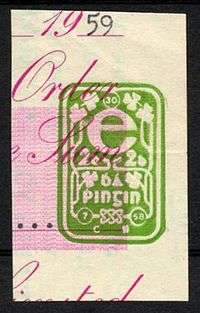Luxury tax
A luxury tax is a tax on luxury goods: products not considered essential. A luxury tax may be modeled after a sales tax or VAT, charged as a percentage on all items of particular classes, except that it mainly affects the wealthy because the wealthy are the most likely to buy luxuries such as expensive cars, jewelry, etc. It may also be applied only to purchases over a certain amount; for instance, some U.S. states charge luxury tax on real estate transactions over a limit.
A luxury good may be a Veblen good, which is a type of good for which demand increases as price increases. Therefore, the effect of a luxury tax may be to increase demand for certain luxury goods. In general, however, since a luxury good has a high income elasticity of demand by definition, both the income effect and substitution effect will decrease demand sharply as the tax rises.
Theory
Luxury tax is based on the concept of positional goods, which are scarce goods whose value arises as status symbols largely from their ranking against other positional goods. This creates a zero-sum game in which the absolute amount of goods purchased is less relevant than the absolute amount of money spent on them and their relative positions. Agents competing in such a game for pure positional goods do not lose utility if some of this money is taken as tax, because their utility comes as status from the amount of money (displayed to be) spent rather than the use-value of the goods themselves. For a pure positional good, a luxury tax is the perfect form of taxation because it raises revenue without any adverse utility effects.[1]
Impact
When a luxury tax is imposed, the majority of people are not affected by it and are not subject to the tax. However, over time, what is viewed as "luxury" might change, resulting in more and more people being affected by the tax. Despite the animosity that ensues, the government may view the income from the luxury tax as essential and will not restrict or rescind it. So it may happen over time that goods considered "ordinary" might also incur luxury tax. An example of this can be seen with various commodities in the country of Norway, where at the beginning of last century, oil-powered cars and chocolates were viewed as luxury goods. Thus, additional taxes were levied upon these goods. Today few Norwegians consider cars or chocolate a luxury, but the luxury taxes on these goods remain. In Ireland, many personal hygiene products are within the luxury tax bracket.
History
In the United States, many states used to collect state sales tax through the use of "luxury tax tokens", instead of calculating a percentage to be paid in cash like the modern-day practice. Tokens could be purchased from the state and then used at checkout instead of rendering the sales tax in cash. Presumably, the purpose of the practice was to remove the incentive for stores and businesses to avoid reporting income. Some tokens were copper or base metal while some were even plastic.
Luxury tax in the United States
In November 1991, The United States Congress enacted a luxury tax and was signed by the former President George H.W. Bush. The goal of the tax was to generate additional revenues to reduce the federal budget deficit. This tax was levied on material goods such as watches, expensive furs, boats, yachts, private jet planes, jewelry and expensive cars. Congress enacted a 10 percent luxury surcharge tax on boats over $100,000, cars over $30,000, aircraft over $250,000, and furs and jewelry over $10,000. The federal government estimated that it would raise $9 billion in excess revenues over the following five-year period. However, only two years after its imposition, in August 1993, the Congress decided to eliminate the “luxury tax” since it did not achieve its main objective. The tax revenues generated were disappointing and unsatisfactory for the Congress and it also negatively impacted the incomes of the sellers of the luxury items. However, the luxury automobile tax remained in effect until 2002.[2]
In popular culture
One of the squares on the Monopoly board game (U.S. edition) is labeled "luxury tax". While there is a picture of a sparkling diamond ring on the square, the only effect is that whoever lands on this square must pay $75.00 to the bank.
See also
Further reading
- ↑ • Robert H. Frank (2008). "consumption externalities," The New Palgrave Dictionary of Economics, 2nd Edition. Abstract.
• _____ (1997). "The Frame of Reference as a Public Good," Economic Journal, 107(445), pp. 1832-1847.
• _____ (2005). "Positional Externalities Cause Large and Preventable Welfare Losses," American Economic Review, 95(2), pp. 137-141 (close Bookmarks tab & press +). - ↑ "Good Riddance to the Luxury Tax". Wall Street Journal. ISSN 0099-9660. Retrieved 2016-04-20.
External links
| Wikinews has related news: US Congress to Re-Establish the Luxury Tax |
